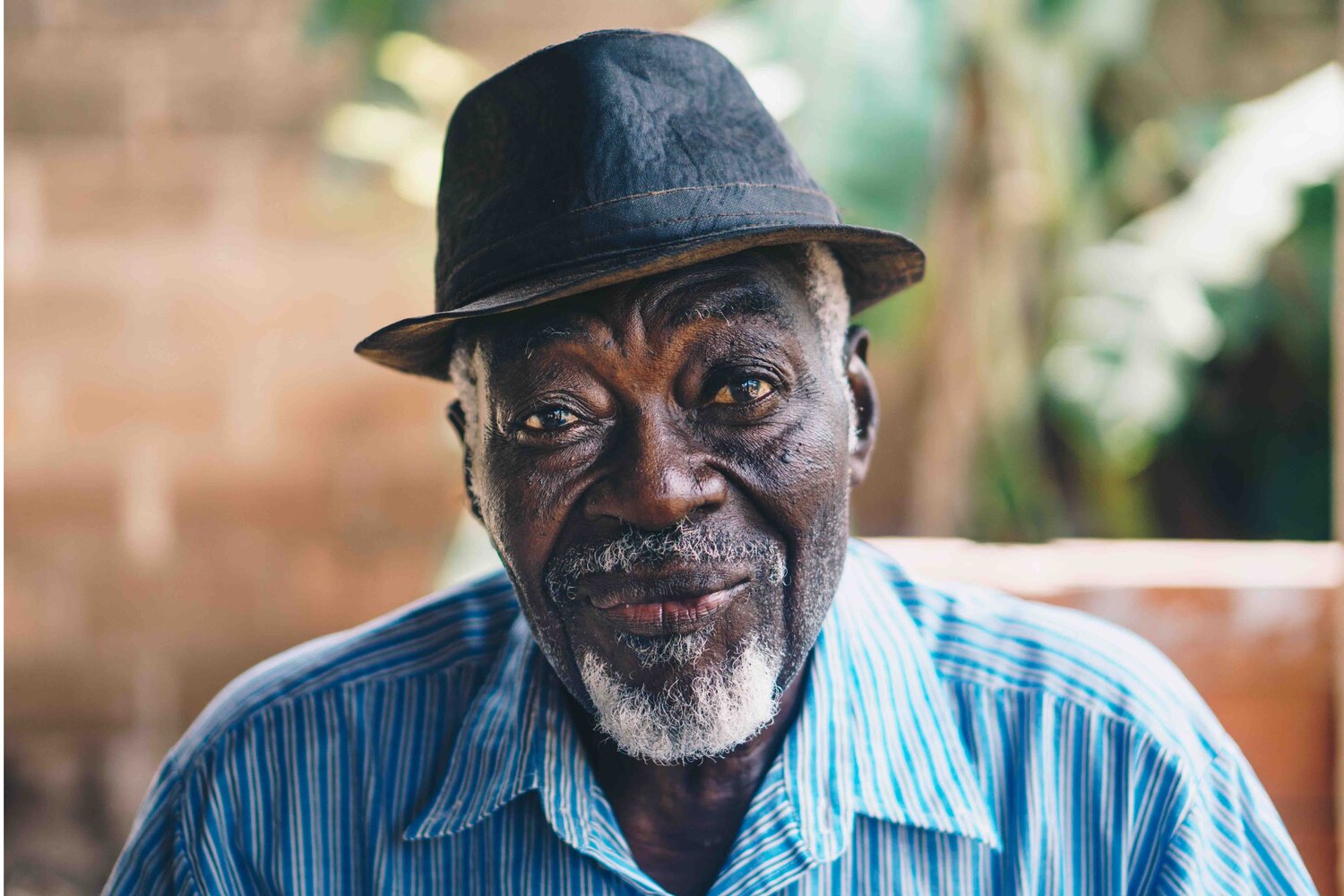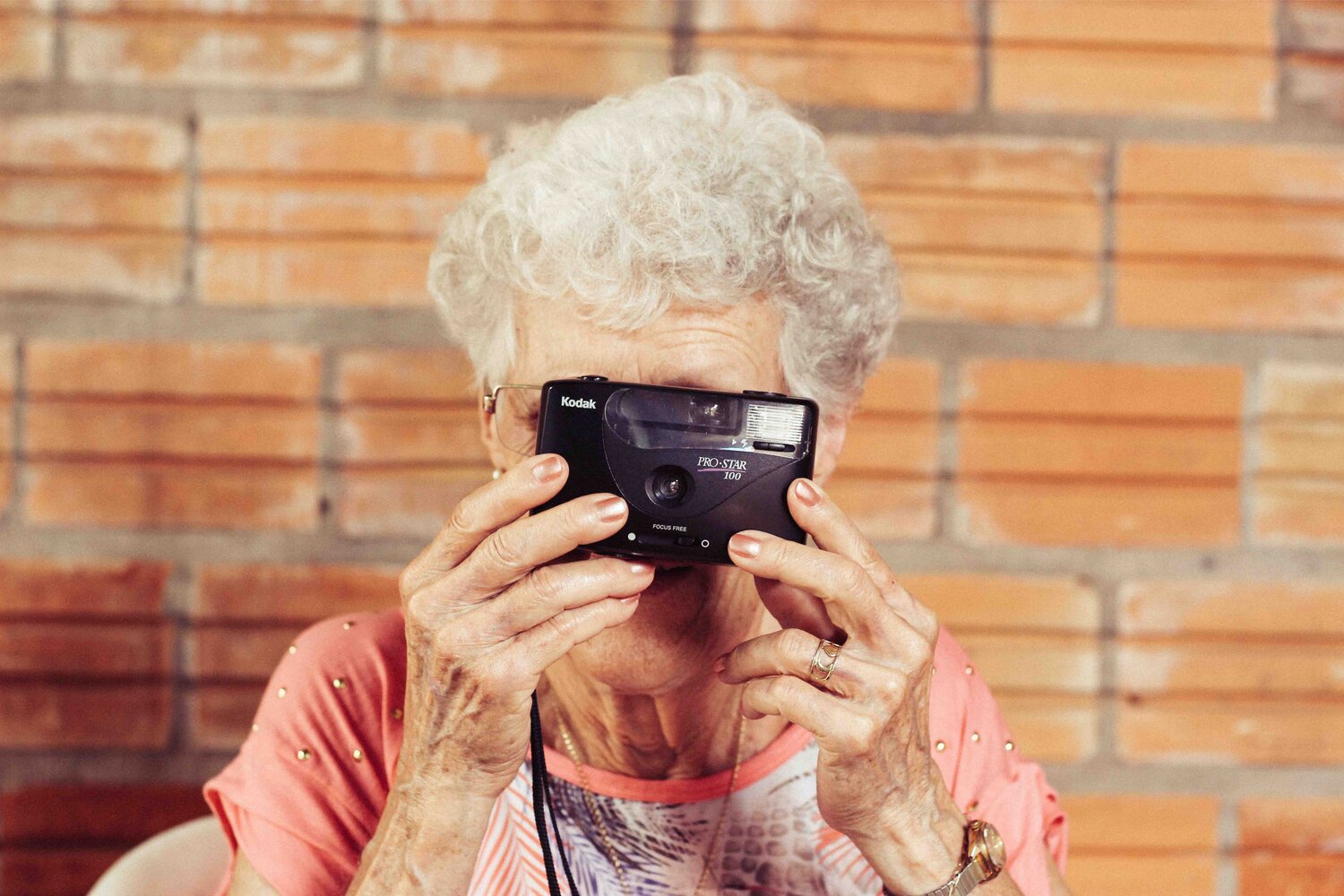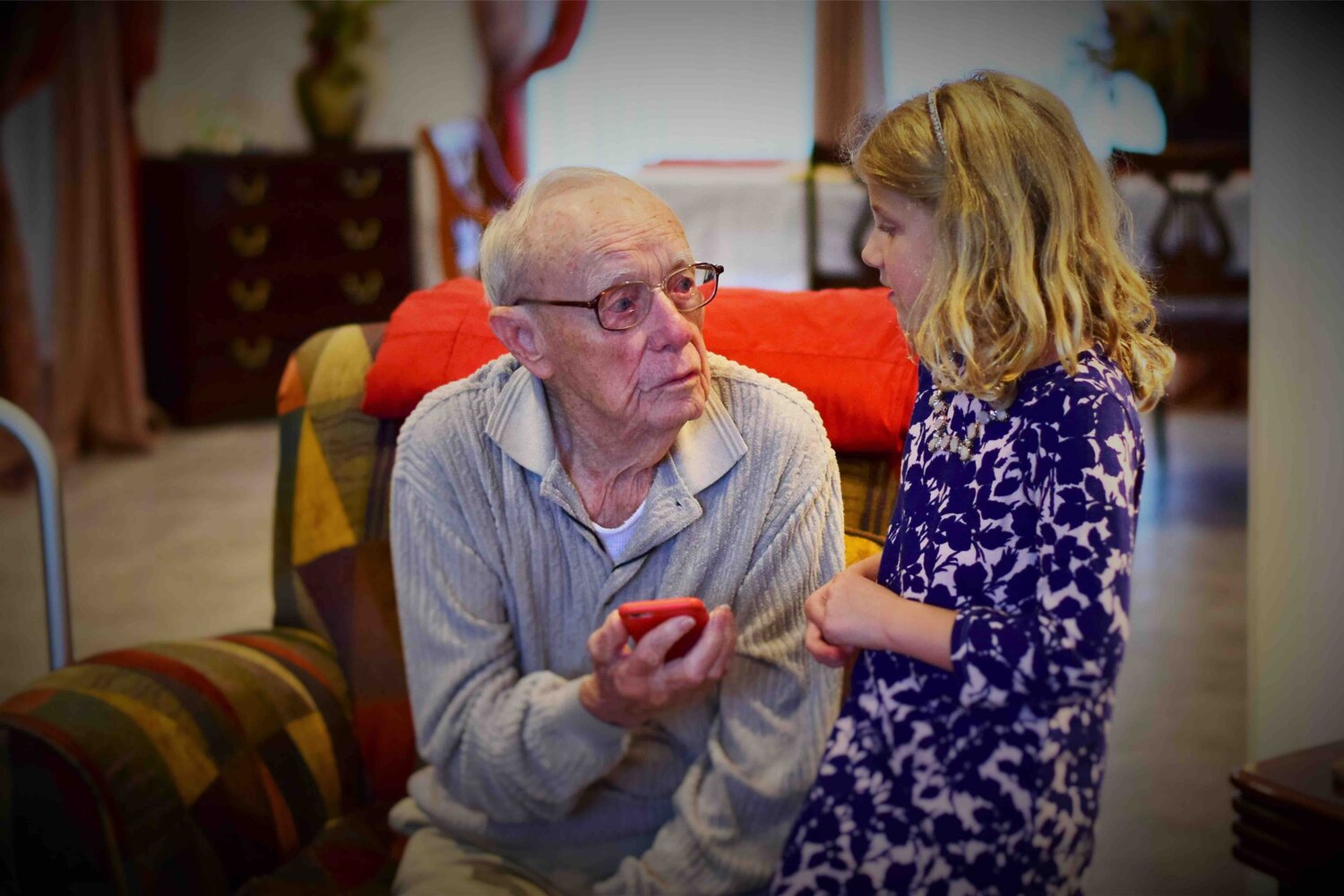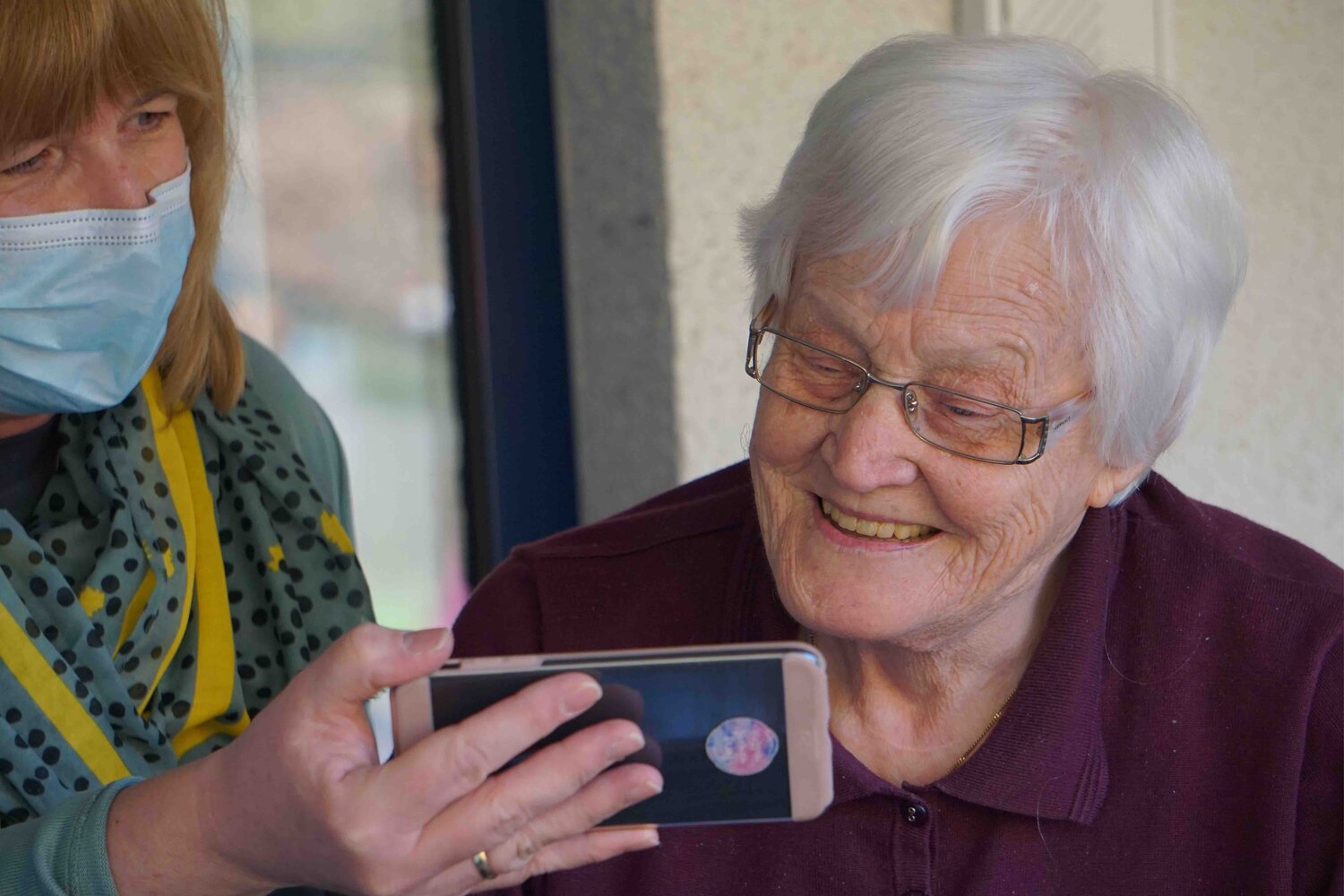
Earlier this year we began our first community outreach project. We visited members of the public living in care homes and invited them to share their true life stories with us. This was a huge learning curve for Stozzys and a number of challenges and successes emerged. Here’s what we’ve learned.
First up, what was the purpose of our community outreach project?
Bringing people together, allowing them to connect more fully with their past and to experience the benefits of true life storytelling is something we feel can be transformative. When approaching loneliness, mental health and human connection, storytelling often forms the backbone of a positive experience. Equipped with this knowledge, we decided to invite members from a care home in our community to share their stories. Ultimately, it was our aim that this would be a positive experience for participants and that they would find value in sharing their story anonymously with others.
Safeguarding
The first step of the pilot scheme was to ensure the safety of our volunteers and participants. True life storytelling is an extremely personal experience and it is important that each story is respected, as well as the individual telling it. Not only this, but we felt we had a duty to ensure that participants didn’t disclose any information they would later regret. At all points of this project, participants were accompanied by two people. The first was someone from the support team at the care home, so that they felt comfortable and safe throughout the whole process. The second was a Stozzys volunteer to help assist with the technical side of things. We also thought it was important that the Stozzys member of staff was someone unknown to the participant so that they only shared parts of their story they were happy to be shared to the wider public via the platform.

It was important to ensure all participants were happy and safe throughout the project
How the project was carried out
We are incredibly fortunate to have an excellent team of volunteers supporting our work here at stozzys.com. Without them, and volunteers from the care home, this project wouldn’t have been possible. Upon receiving recommendations from care home staff on occupants they thought would be interested in taking part, our Stozzys volunteers contacted individuals via zoom. After recording the conversations, stories were then transcribed and sent back to participants to review. Since then, approved stories have been posted to the website for readers to enjoy.
Challenges
A number of challenges arose from the true life storytelling community outreach project. Some were anticipated and some were not. Each challenge was a valuable lesson for us to learn from and will inform our approach to future projects.
People didn’t think their story was interesting
One of the main barriers to participation levels was that people didn’t think their story was interesting enough to tell. We hope that we can convince more people of the worthiness of their story moving forward, as all stories are of value and can allow the teller to experience the benefits of true life storytelling.
Covid-19
Due to restrictions, all communication between Stozzys volunteers and care home occupants took place via Zoom. The online element was a barrier for some, especially those with visual or hearing impairments. Some residents were also reluctant to talk to new people after being isolated for a long period of time during the pandemic lockdowns.
Some people aren’t ready to share their story
We feel that we have a duty to ensure that everyone who wants to, gets the opportunity to share their story. However, it is important to recognise that some aren’t ready to share details of their past. Some participants didn’t want to tell their story due to difficult life experiences.

A number of participants were willing to share their stories and memories with Stozzys
What worked well
Whilst some challenges emerged throughout the project, feedback from all participants was that sharing their true life story was a positive experience. Feedback from the care home volunteer was that it would be valuable for Stozzys to take the project to other care homes. A number of things worked well too.
Participants enjoyed meeting someone new
Participants enjoyed talking to someone about their lives and meeting a new person. Care home staff agreed, telling us that the project was “a great creative activity for customers during a period of isolation and loneliness”. They all found our Stozzys volunteer, “warm and welcoming”.
Participants liked that stories would be shared anonymously
Participants felt more reassured in taking up the opportunity knowing that their true life stories would be shared anonymously. They also said this aspect of the project made it feel safer and made it easier to talk about their lives.
The cross-generational aspect of the project
Feedback from care home staff was that the cross-generational element of the project between participants and volunteers was a positive one. Volunteers also enjoyed connecting with people from different backgrounds and with different life experiences to their own.

The cross generational aspect of the outreach project was seen as a positive
What we would do differently
As expected, there are a number of things we have learnt that could improve future true life storytelling community outreach projects. After carrying out a review of the project with both the Stozzys team and the care home staff, several areas of improvement have emerged.
More information from Stozzys beforehand
Moving forwards we think it would be beneficial for Stozzys volunteers to run a workshop in the care home to explain the project to potential participants and answer any questions. Sample stories would be distributed at this time, as well as the reason for the project and the benefits of true life storytelling. Volunteers would then return at a later date to collect stories from those wishing to take part.
Face to face storytelling
When Covid-19 rules allow, we would like to offer face-to-face visits for delivering workshops and collating stories. We feel this would enhance the benefits surrounding human connection, plus make the experience easier for participants and care home staff.
Questionnaires
Whilst informal conversations with care home occupants have provided us with valuable feedback, it would be useful to collect data through anonymous and uniform questionnaires. This will allow us to gage the impact of the project more thoroughly and perhaps even work towards collecting quantitative data on true life storytelling.

We would like to collate stories face to face in the future
Additional outcomes
A notable additional outcome was that both the care home and Stozzys volunteers found the experience rewarding. The care home volunteer enjoyed hearing participant’s stories, meeting the Stozzys volunteer and being able to support participants through the process. Our Stozzys volunteer said that she got “a huge amount” out of the community outreach project. She felt it was a great way to connect with people she may not have otherwise connected with and that gaining insight into participants’ lives is a great privilege. Both said that they would be happy to participate in the project again.
Conclusion
Overall, we feel that the true life storytelling community outreach project was a huge success. Not only did we collate new stories to add to the Stozzys repository, but feedback from participants was that it was a positive experience. As COVID restrictions are lifted, we hope that it becomes easier to deliver more community outreach projects and that we can deepen the level of connection gained from them through face to face visits. We also see community projects as a great way for gathering data on the impacts of true life storytelling, whilst ensuring that sometimes left-behind members of our community are able to experience the benefits of true life storytelling.
If you would like to share your true life story, you can do so via the share stories page.
Alternatively, you can explore the Stozzys true life story repository via the read stories page.
